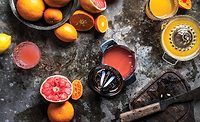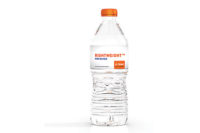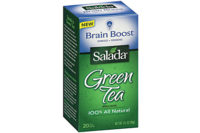Packaging Materials
Health, environmental benefits of glass elevate status
Suppliers continue to address PCR, lightweighting demands

The idiom clear as glass often is evoked by people when illustrating that a point is easy to comprehend or accept. The saying also can be applied to the packaging market it symbolizes as the benefits of using glass packaging has become more pronounced.
Jon Zuckerman, vice president of operations at Zuckerman Honickman, a TricorBraun company, notes that consumers prioritizing their health have placed a positive spotlight on glass packaging.
“Consumers are increasingly worried about the health impacts of their packaging choices and micro plastics and PFAS or other chemicals in any packaging made of plastic or including a plastic liner may be of concern to consumers focused on health issues, especially in those beverage categories marketing toward health and wellness,” he explains.
Rachel Murphy, director of category and consumer insights at TricorBraun, St. Louis, also calls attention to premium positioning and product safety attributes as a driver for glass packaging.
“One, glass is perceived by consumers as a premium option and two, refillable solutions,” she explains. “Glass is able to be collected and re-sanitized at high temperatures after use, then refilled and delivered back to the consumer.”
The ability of glass to handle harsh environments also aligns with sensitive beverage formulations.
“Glass provides an absolute barrier to protect natural products from perishing more quickly,” says Rosalynd Resendiz, vice president of global supply chain at TricorBraun. “Also glass is a great solution for products that off gas like kombucha because of its strength.”
Echoing Murphy’s sentiments regarding consumers’ perceptions of glass as a premium symbol, Zuckerman also notes the range of design and size options for glass.
“Glass stands out on the shelf as a premium option for brands and their customers,” Zuckerman says. “Glass bottles come in an ever increasing variety of size, label and decoration options on top of their sustainability and other key environmental benefits.”
Environmental solutions
Although health attributes and premium positioning have elevated glass in recent years, the environmental attributes associated with the primary packaging material are one of its leading drivers.
“Glass can be, and is used in refill programs for beverages ranging from beer and cider to dairy, emphasizing its closed-loop nature,” Zuckerman says. “The Glass Packaging Institute states that domestically produced glass bottles and jars average 25 to 30% recycled content rates, and even higher recycling and recovery rates in the 10 states with bottle deposit return programs.”

Image courtesy of Verallia
Given the importance of recyclability for today’s packaging materials, suppliers are taking important steps to support increased efforts.
“The glass industry is undertaking a major effort to increase the glass recovery and recycling rate in the United States with a 50% recovery rate nationally by the end of the decade,” says Brian Bergan, supply chain manager at Zuckerman Honickman. “Players in the glass industry are working on solutions to promote glass recycling policy, infrastructure and innovative collection collaborations to divert glass from landfills and back into the supply chain.”
With so much attention on recycling efforts, suppliers also are employing post-consumer recycled (PCR) materials in glass packages.
“Many manufacturers offer up to 50% PCR as well for glass containers,” TricorBraun’s Resendiz says.
Addressing lightweighting options while maintaining the package structure also remain prevalent for suppliers. For example, French glassmaker Verallia and Telmont test launched bottles weighing 800 grams, which are 35 grams lighter than standard Champagne bottles, the company says. The initial test was on 3,000 bottles, and the two are beginning a new stage with 30,000 bottles for the certified organic cuvée ‘Réserve de la Terre’, which will be available beginning in 2026.
“We are proud to have taken up this challenge with Verallia, so far successfully,” said Ludovic du Plessis, President of Maison Telmont, in a statement. “This experiment initiated by Telmont must extend beyond the borders of our estate. In the Name of Mother Nature, we encourage everyone in Champagne to adopt this bottle. Why? Because using lighter bottles across the board is better for our planet and will benefit all.”
Whether in the name of personal health or health of the planet, glass has shown its ability to support both these need states.
Looking for a reprint of this article?
From high-res PDFs to custom plaques, order your copy today!







